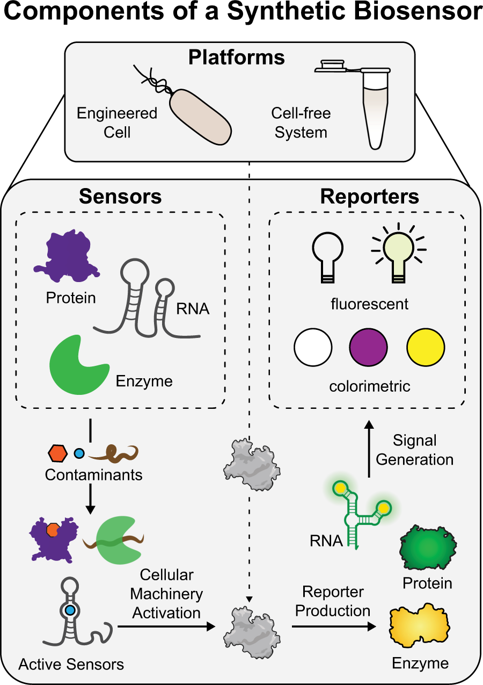npj Clean Water ( IF 10.4 ) Pub Date : 2020-04-03 , DOI: 10.1038/s41545-020-0064-8 Walter Thavarajah 1, 2, 3, 4 , Matthew S Verosloff 2, 3, 4, 5 , Jaeyoung K Jung 1, 2, 3, 4 , Khalid K Alam 1, 2, 3, 4 , Joshua D Miller 3, 6 , Michael C Jewett 1, 2 , Sera L Young 3, 6, 7 , Julius B Lucks 1, 2, 3, 4

|
Tracking progress towards Target 6.1 of the United Nations Sustainable Development Goals, “achieving universal and equitable access to safe and affordable drinking water for all”, necessitates the development of simple, inexpensive tools to monitor water quality. The rapidly growing field of synthetic biology has the potential to address this need by isolating DNA-encoded sensing elements from nature and reassembling them to create field-deployable “biosensors” that can detect pathogenic or chemical water contaminants. Here, we describe current water quality monitoring strategies enabled by synthetic biology and compare them to previous approaches used to detect three priority water contaminants (i.e., fecal pathogens, arsenic, and fluoride), as well as explain the potential for engineered biosensors to simplify and decentralize water quality monitoring. We conclude with an outlook on the future of biosensor development, in which we discuss their adaptability to emerging contaminants (e.g., metals, agricultural products, and pharmaceuticals), outline current limitations, and propose steps to overcome the field’s outstanding challenges to facilitate global water quality monitoring.
中文翻译:

新兴的可现场部署的用于全球水质监测的合成生物学工具入门
追踪实现联合国可持续发展目标的目标6.1的进展,即“实现人人享有普遍和公平的安全和负担得起的饮用水”,有必要开发简单,廉价的工具来监测水质。迅速发展的合成生物学领域具有潜力,可以通过将DNA编码的传感元件与自然界隔离开来并重新组装,以创建可现场部署的“生物传感器”来检测病原或化学水污染物,从而满足这一需求。在这里,我们描述了由合成生物学实现的当前水质监测策略,并将其与用于检测三种优先级水污染物(即粪便病原体,砷和氟化物)的先前方法进行比较,并解释了工程化生物传感器简化和分散水质监测的潜力。最后,我们展望了生物传感器发展的前景,在其中我们讨论了它们对新兴污染物(例如金属,农产品和药品)的适应性,概述了当前的局限性,并提出了克服该领域面临的挑战的便利,以促进全球水资源的发展。质量监控。











































 京公网安备 11010802027423号
京公网安备 11010802027423号